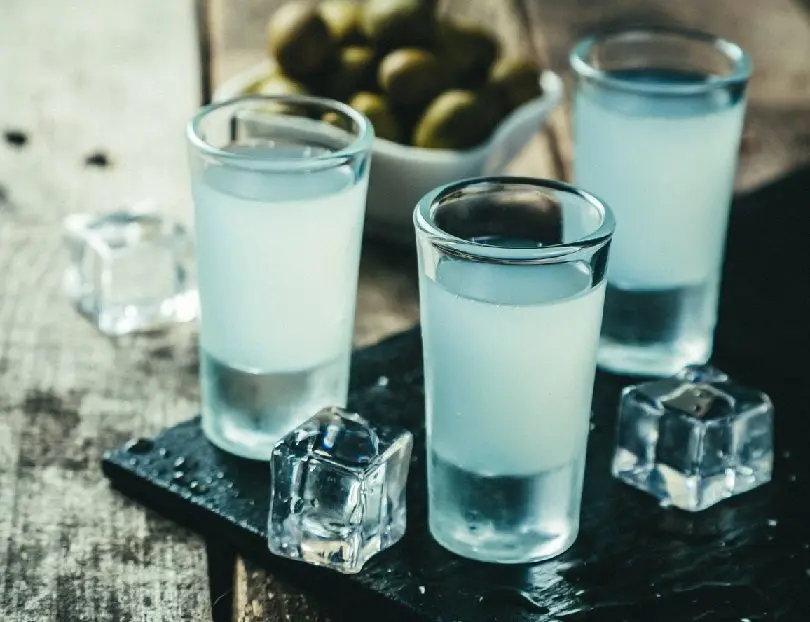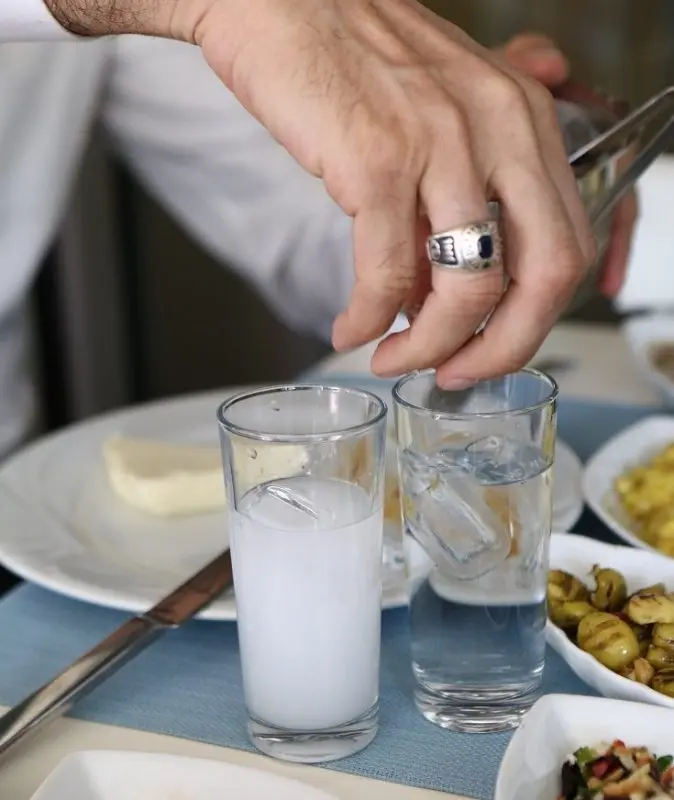Ksarak is a Lebanese arak (aniseed distillate) produced in the Beqaa Valley at the Château Ksara winery. The production of “Chateau Xsara” was founded in 1857 by Jesuit monks and initially specialized in dry wines, expanding the product line over time.
Xarak drink is a classic representative of the eastern araks, it is a strong 53-degree grape distillate with anise. The drink is distilled three times, cutting off the “heads” and “tails” – you can drink only the average, “heart” portion. Then, before selling, the alcohol is infused for two years in earthenware jugs.
Anise is taken from the Al Heenah area of Mount Hermon to make ksarak. It is believed that the best examples of this spice grow there.

Production features
For the preparation of the alcoholic base of ksaraka, two varieties of grapes are used:
- Obeidi (Obaideh): This is an autochthonous white grape suitable for both elegant wines and strong distillates.
- Ugni Blanc is an international white variety, one of the three base varieties for cognac, especially common in Italy and France, it produces light refreshing wines.
Berries are pressed under pressure and fermented (fermented) at low temperatures for 15-20 days. Ready mash undergoes rectification and purification from methanol, impurities and oils. Anise is added to the almost ready ksarak and distilled three times in traditional alambika, then the drink is filtered and sent to ripen in clay jugs for two years.

Château Ksara
The winery where ksarak is made is located in the Bekaa Valley. It has a semi-continental climate characterized by cold winters, hot dry summers and moderate rainfall. The vineyards are located at an altitude of about 1000 meters above sea level, the difference between day and evening temperatures can reach 15 degrees. The valley is reliably sheltered from cataclysms by two mountain ranges. The Bekaa has ideal conditions for cultivating grapes and producing quality alcohol.
The name of the valley is associated with the name of the ancient Roman god of winemaking Bacchus. The name of the winery comes from the word “ksar” – “fortress”.
“Chateau Xsara” was founded in 1857, in 1973 the production passed into the hands of a group of entrepreneurial winemakers. The new owners treated medieval traditions with respect, supplementing them only slightly with modern technologies. For example, all products of this brand are aged in underground caves left over from Roman times.
On clay-chalk soils, grapes of Cabernet Sauvignon, Shira, Chardonnay, Merlot, Semillon, Gewürztraminer, Claret and others are grown.
How to drink ksarak
Serve ksarak in small piles, after cooling, you can also add ice cubes to it or dilute it with cold water in a ratio of 1:3 or 1:4 – due to the high concentration of essential oils, ksarak will immediately turn white as milk.
Despite its high alcohol content, ksarak has a surprisingly smooth taste, is easy to drink and is well suited for a hearty lunch or dinner.
Ksarak is combined with Lebanese meze appetizers and, in general, with any oriental cuisine.

Xarak cocktails
Xarac can be used in any cocktail that includes anise. It successfully replaces pastis, sambuca, ouzo, classic arak.
- Anise Cosmo. In an ice-filled shaker, combine 1 part xarak, 6 parts cranberry juice, and ½ part lemon juice. Serve in a martini glass garnished with a lemon wedge.
- Aniseedy Cranberry. Pour 1 part of ksarak into a Collins glass, add 6 parts of cranberry juice, mix with a cocktail spoon or a stick, garnish with a slice of lemon.
- Odyssey. In a highball glass, mix together 1 part anise and 6 parts any lemonade and/or lime flavored lemonade. Serve with a lemon wedge and star anise.
- Parrot. Put a few ice cubes into an old fashion glass, pour in 45 ml of ksarak, dilute it with 135 ml of water, add 10 ml of mint syrup, stir everything. Serve with a piece of melon.
- Pearl. Put a few ice cubes in a highball glass, pour one and a half parts of vodka, splash ksarak to taste, add 6 parts of lemonade with lemon and / or lime flavor. Serve with strawberries.









